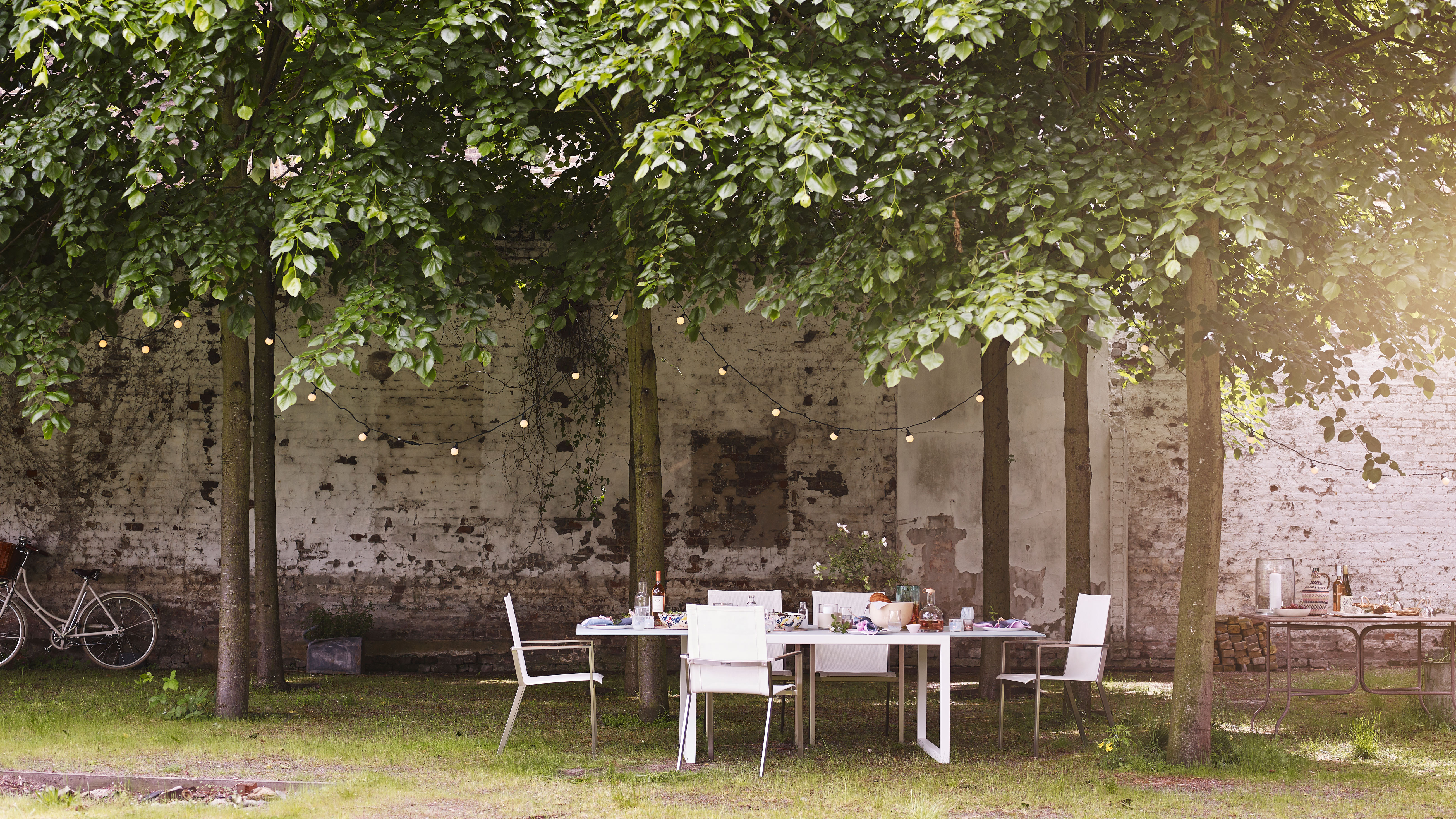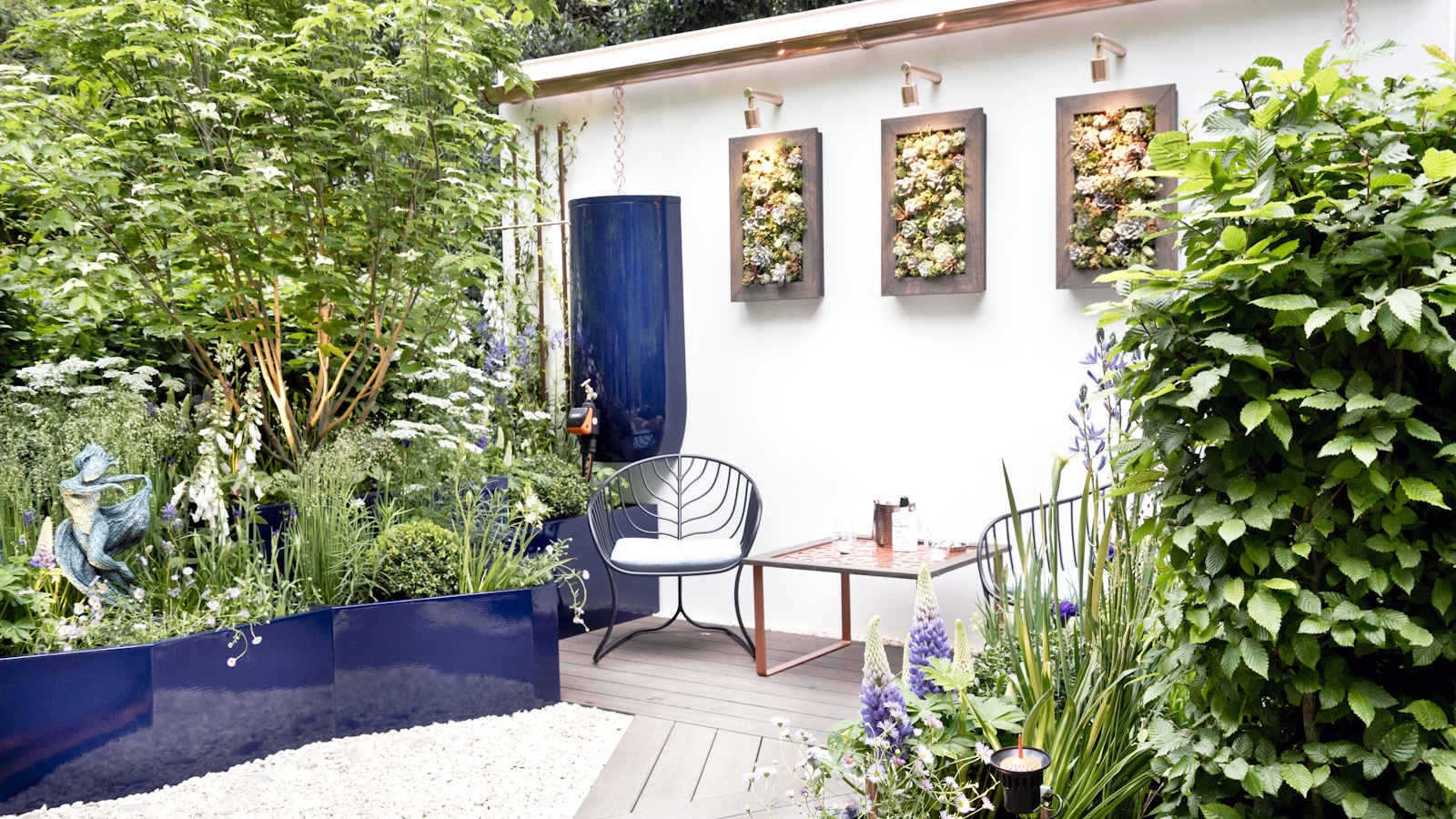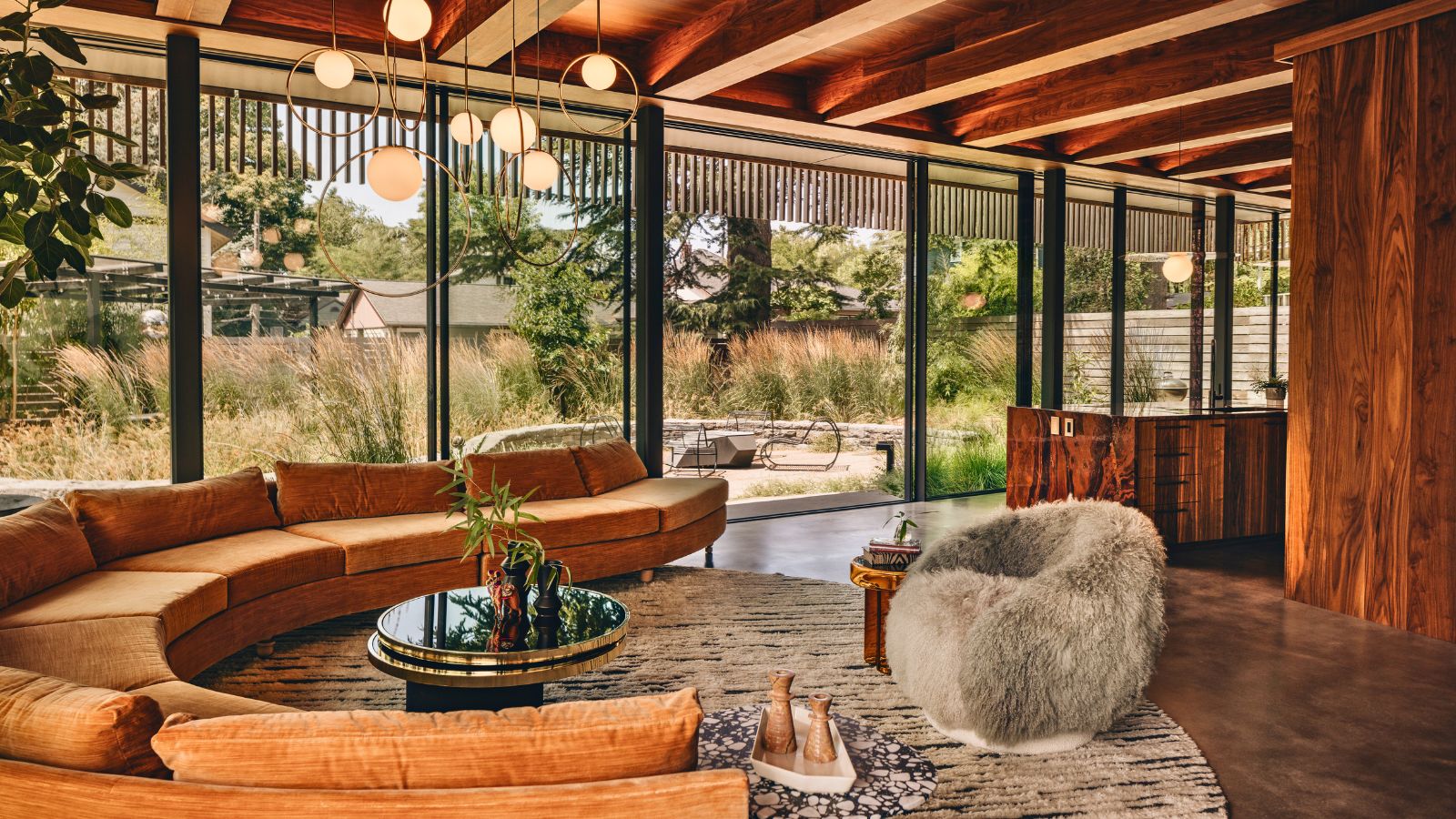Garden design dos and don’ts — how not to plan your garden
Swerve the traps and make the right calls with garden design dos and don’ts from the experts


A list of garden design dos and don’ts can avoid disappointment, repetition of effort, and wasted money when you’re planning a garden.
As with many improvement projects, the mistakes we tend to make in designing a garden aren’t novel, but rather regular traps for the unwary.
But the fact that they are familiar errors also makes them easy to avoid once equipped with a list of what to do and what to avoid from the experts, who’ve seen it all before.
So, however ambitious or otherwise your garden ideas are, these garden design dos and don’ts will ensure your best laid plans won’t go awry.
Garden design dos and don'ts
Don’t rush into a new design
Patience pays when you start to think about how to plan a garden. ‘If you’ve moved into a new property and want to remodel the garden, wait,’ says Teresa Conway, gardens editor of Homes & Gardens.
‘Your patience might be rewarded with spires of bluebells in spring or a flurry of wild campanula in June. This happened to me when I moved into my new London home in March of this year.
These “free gifts” from nature might inform how you wish to use the space, keeping certain areas wild to allow these natural bounties to get on with it.’
Do put a limit on the number of colors, materials and plants
In order to create a successful garden design, a little restraint is necessary.
‘When it comes to materials, surfaces and colors, pare back,’ advises gardening writer Sarah Wilson. ‘Two or three hard landscaping materials or surfaces is sufficient, as less is more.
‘The same goes for plants. For a garden to look and feel natural, you need to think about planting a variety of different sized plants and arrange them in repeat patterns rather than adopting the “one of everything” style of planting.’
Don’t overcomplicate your garden plan
It’s as tempting to pack all the garden decor ideas you’ve seen and fallen for in your research into a new garden design, as it is to overdo the range of colors and materials (see above). However, you should be selective, advises garden designer Ed Oddy MSGD.
‘Don't try to pack too many different ideas into your garden,’ he says. ‘Keep things simple and your ideas are likely to be far more effective.’
The best way to assess a potential design can be to transfer what you’ve produced on paper or on screen into a life-size version of the plan in the garden. For this, you’ll need a metal tape measure, along with pegs, canes and string and some sand in an old plastic bottle.
Use the pegs and string to mark where all the main features will go, then use sand to mark their perimeters and take the string away. Canes can represent items like trees and other focal points. Check out the design from different parts of the garden as well as from the house. Too much going on? It’s easy to edit your plan.
Don’t slavishly follow the edges of the plot
If your garden is rectangular or square, it’s easy to assume the garden design should follow these lines. But this is a no-no, says Fellow of the Society of Garden Designers and CEO of Bowles & Wyer, John Wyer.
‘Don’t slavishly follow the edges of the plot. Create a new geometry that is unique to the garden, but works with the house,’ he recommends. ‘Adding curves rather than straight lines to a design helps in this respect, making it feel both more natural and more exciting to the eye.
‘But keep balance in mind, too. Ensure the garden design doesn’t look out of proportion with any key features of the property and still remains sensitive to the architectural style.’
And if you are stepping away from straight lines, be mindful of the additional advice he offers. ‘Do make curves purposeful and give them direction. Wavy, wobbly curves look aimless and weak.’
Do think about how different areas will work together
A garden design has to work in its entirety for success. ‘When planning a garden people tend to think in terms of garden objects, such as a BBQ or a trampoline, rather than standing back and assessing the space as a whole functional unit that needs to flow together,’ says garden designer Dr Peter Reader MSGD.
‘Whilst the required functions of a garden are key starting points to understand when designing a garden, it is very important to think about how these will best fit into the garden in a way that makes sense and will flow (or sit) naturally together,’ he explains.
‘I talk to clients about “journeys’’or “stories” within the garden and a layout of the space that sits comfortably together.
If this aspect of the design is not considered, the garden will end up looking like a dog’s dinner of bits and pieces that have been plonked there rather than a cohesive natural space that intrinsically feels good to be in.’
Do opt for shrubs for a low maintenance garden design
If you don’t have a lot of time to spend on caring for your garden, use shrubs as a mainstay of your design.
Dr Peter Reader says, ‘Most clients understandably don’t want a high maintenance garden and this seems to manifest itself as them asking for narrow flowerbeds, as these will require less work – right? Actually this is wrong.
‘The best low maintenance plants are shrubs. Shrubs last many years, just gradually growing over time, don’t require a lot of looking after and can deliver interesting structure, flowers, berries and autumn leaf colour, as well as a lot of them being evergreen, so they look good in the winter as well.
‘The thing about shrubs though is that many of them will get quite big, from 1 to 2m (3 to 6.5 feet) in size. This means that if you put them in a narrow bed, then you will fairly quickly and regularly be having to cut them back as they over-hang the lawn or paths.
This destroys the beauty of their natural shape, creates woody holes in the foliage canopy and requires maintenance. By having a wider bed to start with, the shrubs can be gently pruned as they reach their mature size every three to five years and be kept looking beautiful.’
Don’t overdo evergreens
While one of the benefits of evergreens is that they’ll create winter color (see above), it is possible to have too much of a good thing.
‘Don’t fall into the trap of overusing evergreen material,’ warns John Wyer. ‘Seasonality is king in a garden. What you notice is what is new and what has changed since you last looked.’
That said, living wall ideas can create a verdant, evergreen backdrop that will be particularly effective at showing off more colorful plants in borders and containers.
Plants that will bring color and interest to a winter garden include dogwood with its firey toned stems and trees such as birch, paperbark maple and Tibetan cherry (Prunus serrula) with their attractive bark.
Enjoy the flowers of hellebores, pansies and winter aconites, too.
Do take maintenance of hardscaping into account
While many of us think about how much time we have available to spend tending the plants in our gardens, it’s easy to ignore the fact that it’s not just the living elements of the design that need our care and attention.
‘Consider maintenance and whether you are prepared for natural materials, such as timber and stone, to age and change colour,’ advises garden designer Rosemary Coldstream MSGD MBALI. ‘All materials require some maintenance but some are less work than others.’
Gravel with a weed-suppressing membrane laid underneath is a low maintenance option, and patio ideas in porcelain tile should just need sweeping and cleaning from time to time.
Corten – or weathering – steel, which can be used for walls, edging, screens and more, meanwhile, develops a protective rust that adds warm color to a garden and doesn’t need any looking after.
Solid garden wall ideas require initial high outlay but they will need little to no maintenance. Natural stone will make a wonderful, timeless addition to any garden, especially if chosen to match your home's natural materials.
Don’t assume a seating area in the sun is best
‘Don’t automatically opt for the sunniest spot for a seating area,’ warns Teresa Conway.
‘For me there’s nothing worse than sitting in full sun on a hot summer’s day. It means regular applications of SPF 50 and much battling with a belligerent parasol attempting to follow the shade.
Garden shade ideas, such as pergolas, would be my structure of choice for creating shade in a seating area but they can be obtrusive to existing views as well as costly. If you can make use of natural shade, such as a tree or an area near the house, then this is a cost-effective and low effort solution.
‘Save your sun for an area of lawn which can be home to a gorgeous sun lounger when required. Or dedicate bright spots to a kitchen garden where most edibles will thrive.’
Do include water in your design
Many gardens neglect the potential of water, but this can be a missed opportunity. ‘Try and get some water in somewhere, even if it is just a steel bowl filled with rainwater,’ says John Wyer. ‘Birds love it, and it is a delight to see the merest breath of wind disturb the surface.’
Where safety is a concern and with supervision of kids also vital, opt for a raised water feature. Alternatively, you can invest in a rigid metal grid for a pond, and use fencing or planting as a barrier. But, if you take the latter option, do make sure the water is still apparent to little ones and visitors to your garden.
Sign up to the Homes & Gardens newsletter
Design expertise in your inbox – from inspiring decorating ideas and beautiful celebrity homes to practical gardening advice and shopping round-ups.

Sarah is a freelance journalist and editor. Previously executive editor of Ideal Home, she’s specialized in interiors, property and gardens for over 20 years, and covers interior design, house design, gardens, and cleaning and organizing a home for Homes & Gardens. She’s written for websites, including Houzz, Channel 4’s flagship website, 4Homes, and Future’s T3; national newspapers, including The Guardian; and magazines including Future’s Country Homes & Interiors, Homebuilding & Renovating, Period Living, and Style at Home, as well as House Beautiful, Good Homes, Grand Designs, Homes & Antiques, LandLove and The English Home among others. It’s no big surprise that she likes to put what she writes about into practice, and is a serial house renovator.
-
 Urban gardening ideas – 7 creative ways to grow in small spaces, balconies, containers, indoors, and more
Urban gardening ideas – 7 creative ways to grow in small spaces, balconies, containers, indoors, and moreMake the most of your space with these innovative ways to garden
By Tenielle Jordison
-
 'Sexy disco-era Italy meets Japanese farmhouse in the Brazilian jungle' was the description the interior designer gave this glass-walled modernist home
'Sexy disco-era Italy meets Japanese farmhouse in the Brazilian jungle' was the description the interior designer gave this glass-walled modernist homeOffering a warm welcome that defies its stark, modernist lines, this archictectural gem is full of surprises
By Karen Darlow